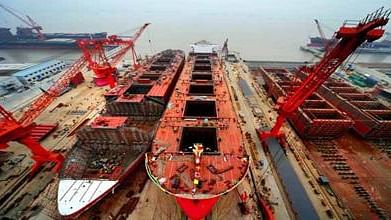Unlike most countries affected by a partial economic slowdown because of the ongoing Covid 19 pandemic, Bangladesh is not about to slow down its aggressive export drive. World Bank authorities during discussion a few days ago noted that during the past decade, India’s Eastern neighbour had increased its exports by 80 per cent.
As for India, its export trade also made good progress during the first decade of the new millennium. Later however, the bigger economy went into a slowdown and the subsequent lockdown on account of the coronavirus pandemic further stalled recovery.
Analysts maintain that by laying more stress on exports as an instrument of growth, Bangladesh is not exactly breaking new ground. It is following other countries in Asia like China, South Korea and Vietnam, which also gave top priority to their export trade on a sustained basis. Enjoying special concessions as an LDC (Least Developed Country) has certainly helped Bangladesh big time in recording a rapid growth in its annual GDP during recent years.
Back in 2010, the country’s per capita GDP was lower by 42 per cent compared to India. But in 2020, Bangladesh reported a higher per capita GDP than India for the first time. According to IMF and other institutions, as things stand, such a trend is likely to prevail at least till 2025, if not beyond.
However, it is common knowledge that Bangladesh will lose the earlier concessions and favourable tariff relief it enjoyed in the near future. Competing with other developed countries, securing more exports would be a major new challenge. At present, an estimated 40 per cent of its total exports ($33 billion in 2020, 39 billion in 2019) is accounted for by the export of low end RMGs (readymade garments) it produces at home. Unless Dhaka diversifies its products range, its lead over its regional competitors including India in export earnings may come to an end.
Not to be caught napping, Dhaka-based policymakers are working on different options to make sure that the pace of economic development does not slacken in the years ahead. Authorities are planning to expand, modernise and upgrade the ship building/ breaking industry, as a first step. Although the industry is yet to reach its full potential, Bangladeshi is traditionally strong in ship building and related activities, wherein lakhs of workers have been engaged.
The government, according to Bangladesh media, began with an initial income of Taka 400 million from such exports in 2000. At present, Bangladeshi-built crafts and vessels are being sold to Germany, Denmark, Finland, New Zealand and some Asian countries including India and Pakistan. Over two million people are engaged in the ship building industry. At present 25 new stockyards are under construction on the river Buriganga to handle more construction in the days ahead.
The growth of agro-based and food processing industries is now beginning to pay dividends. For making juices, pickles and other items Dhaka has begun buying pineapples from West Bengal and Tripura in significant quantities of late. One of its food processing products, a soft drink, currently sells in the West Bengal market. Now the first shipment of the product is being sent to India by ship from Chittagong to Kolkata, as part of a plan to access markets in Nepal and Bhutan.
The production of fish, leather goods and related items has been stepped up in recent years. Fish exports earned $532.9 million last year, and leather items $139.8 million. Officials have been encouraged to note that sales of such items abroad have increased rapidly in recent months. Policymakers in Dhaka hope they will certainly give tough competition to other countries in this sector in the coming days.
This is over and above the plans to modernise and diversify the production of garments, where the country already has its footing as a major player. Schemes to produce relatively costlier, higher end goods for the international markets are being considered. There are plans to export at least $300 million worth of high-end apparel to the EU, US and other countries by 2025.
An operating unit is being expanded at a cost of Taka 576 crore, with additional capital of 150 crore taka to be raised from the market. Latest production techniques will be introduced here. In three years, following the expansion the number of employees would rise to over 35,000 from 10,000 now, according to Bangladesh media reports.
As a recent Wall Street Journal article puts it, Bangladesh has steadily emerged as a ‘bull case’ in South Asia in recent years. It has managed to sustain a positive growth momentum despite facing strong headwinds, during a difficult period that has seen its regional neighbours struggle for progress.
































